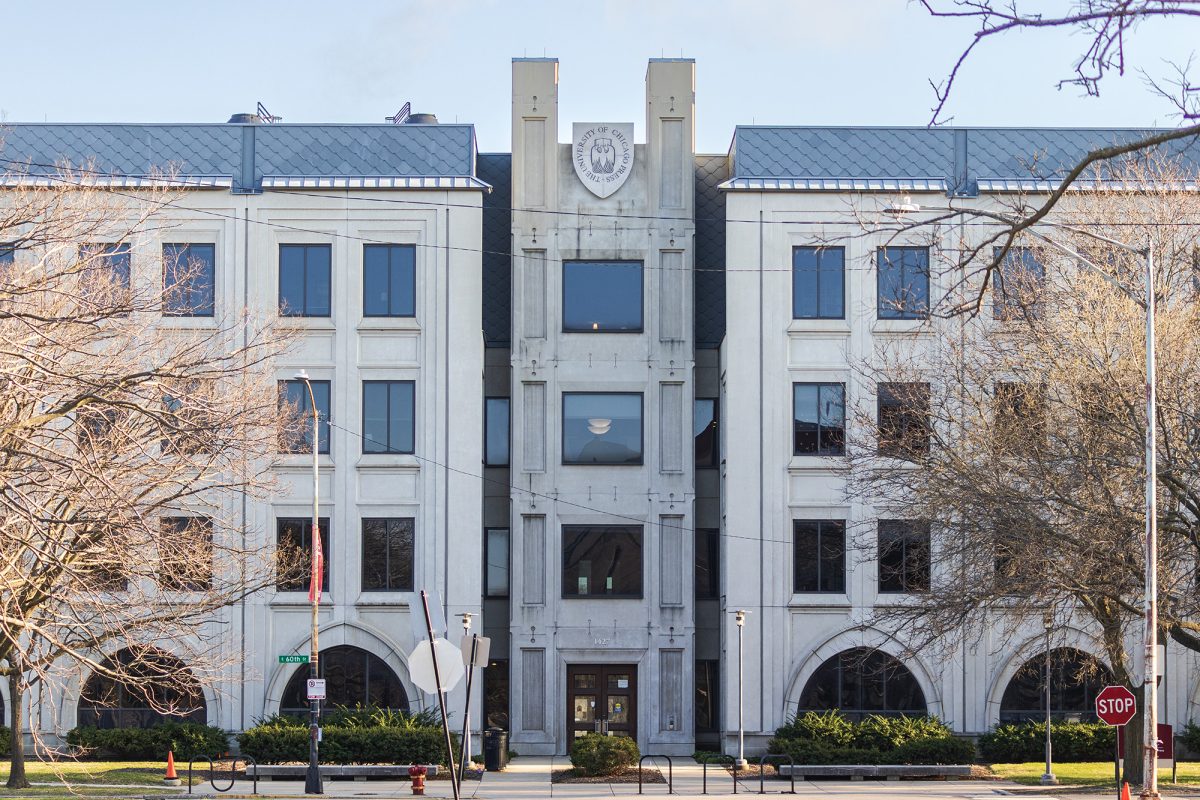Before I discovered how to identify individual quad buildings, find Hyde Park’s grocery stores, or go downtown on the bus, it became clear that Chicago art was accessible. I first noticed this because art was everywhere outside, in parks and plazas. Trying to get a hold on public art at the city center, I did a self-guided walking tour of the Loop in the rain, sheltering under the glass canopy above Chagall’s Four Seasons, putting my face near the vibrant mosaic mural. The other large sculptures en route were deserted during the 20-minute storm that day. The tour was free; it was in the community; most important, it was beautiful.
Art in Chicago is also financially accessible, thanks to the UChicago Arts Pass, your one-way ticket to all art that isn’t in the public domain. The pass itself is highly convenient to acquire—its your UCID—and it grants free or reduced admission to almost every major Chicago art institution, including theaters, concert halls/auditoriums, screening rooms, and, of course, museums. For what the Arts Pass doesn’t cover, there’s usually a reduced student ticket price.
Begin with local treasures, like the Renaissance Society, the Smart Museum, and The DuSable Museum of African American History. Working outward, the following are very brief guides to several places and events outside of Hyde Park that will take you well into the first part of the year with their abundant offerings.
Art Institute of Chicago (AIC): Guarded by two bronze beasts at its South Michigan Avenue entrance, this world-famous art museum is perhaps as easily recognized by its gorgeous exterior as by the thousands of years’ worth of artistic treasures that lie within. Between rooms filled to burst with Monet, Renoir, Caillebotte, and other celebrities of 19th- and 20th-century art, the AIC also features collections of Japanese woodblock prints, African-American art, and the Modern Wing, a 2009 renovation that offers a rich collection of 20th- and 21st-century art.
Museum of Contemporary Art (MCA): Located a mile and a half north of the Art Institute is Chicago’s own contemporary art museum, which offers several floors worth of post-war art. Here, much more so than at the Art Institute, you will find artwork that pokes and probes at traditional understandings of art. The current lineup includes the show Homebodies, which runs through October 13 and presents work examining the space of the domicile; Modern Cartoonist: The Art of Daniel Clowes, a traveling exhibition that is also the first museum retrospective of the popular graphic artist’s work; and Think First, Shoot Later: Photography from the MCA Collection.
National Museum of Mexican Art: Located in Pilsen, Chicago’s own Mexican-American heritage neighborhood and one of the city’s cultural hubs, this small museum boasts a rich, colorful collection of art that doubles as an educational resource for Mexican history and culture. The permanent collection is organized chronologically, from pre-Columbian times to Chicano resistance art, and is complemented by rotational exhibitions, including works by Frida Kahlo. The annual Día de los Muertos exhibit runs from mid-September to the end of October. The neighborhood is full of authentic Mexican cuisine, fun thrift stores and a handful of private gallery spaces as well.
1st, 2nd, and 3rd Fridays: 1st Fridays are held at the MCA for those 21 or older. Geared more toward art as social engagement, this monthly event runs from 6 to 10 p.m. and offers complimentary food, live music, and a cash bar. Tickets bought in advance go for around $14. For the younger and more broke, 2nd and 3rd Fridays are appealing options. Doors fly open along the blocks comprising the Chicago Arts District in Pilsen from 6 to 10 p.m. on the second Friday of each month, signaling the beginning of a night of free gallery-hopping and an eyeful of diverse contemporary art. 3rd Fridays in the Oak Park Arts District are a similar affair, except with greater emphasis on live music and more dining options.
Also keep on your radar the River North district, located immediately north of the Loop. The largest cluster of art galleries outside of Manhattan, River North has hundreds of fine art galleries open to the public, as well as high-end furniture stores, bars, nightclubs, and some of the city’s best restaurants.
The city’s art has the power to shape college experience. Being neither an art expert nor a longtime Chicagoan, all I have to pass on are memories: I, too, stood in front of Van Gogh’s painting of his bedroom at Arles in the Art Institute, wondering if here would ever feel like home.








